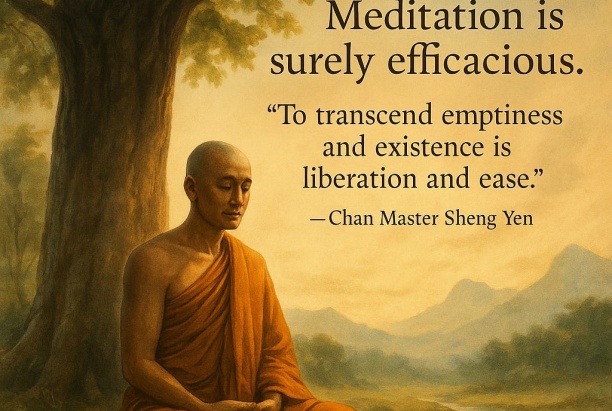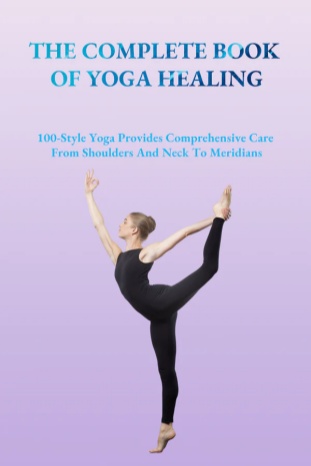The Purpose of Zen Meditation: From Sudden Insight to Gradual Practice, A Path to True Liberation
The Purpose of Zen Meditation
The goal of Zen meditation is enlightenment. The function of enlightenment is to eliminate one’s own afflictions and to relieve the suffering of all beings. If someone claims to be enlightened—or is recognized as such—but cannot demonstrate the function of enlightenment, then it is false awakening, not genuine realization.
Zen emphasizes sudden enlightenment, which leads many to mistakenly believe that awakening is easy—that all problems can be solved in an instant. In truth, many people practice for decades or even an entire lifetime without attaining enlightenment. But the lack of enlightenment does not mean that Zen is useless.
As long as one practices with right method and right view, Zen can reduce suffering—such as anxiety, agitation, fear, depression, or inner imbalance—at any time throughout the journey.
The power of awakening varies in degree:
- Enlightenment can be great or small.
- Its depth can be profound or shallow.
- Its realm may be that of the saintly or the ordinary.
- Its effects may be complete or partial.

A Student’s Journey Without Enlightenment
One of my students has attended more than ten of the week-long Zen meditation retreats I’ve led. Each time, he experiences something new. What was once unclear becomes clear. With every retreat, his understanding of his personal struggles and practice methods deepens. He has not yet seen his true nature or attained enlightenment, but his confidence in the possibility of awakening grows stronger with every experience.
? Book Recommendation: Getting the Buddha Mind
The Three Views of Practice: Emptiness, Existence, and Their Nonduality
The concepts of “emptiness,” “existence,” and “emptiness-as-existence” are not only philosophical terms but also experiential milestones on the path.
To cling to “existence” is suffering;
To cling to “emptiness” is also suffering.
To rely on the functioning of a self-centered mind is attachment to ego;
To have no functioning mind and still remain attached is still ego.
Only by transcending both attachments—to “emptiness” and to “existence”—can one realize the nondual liberation of emptiness and form. This is the prajñā wisdom found in the Diamond Sutra:
“Let the mind arise without dwelling on anything.” (Ying wu suo zhu er sheng qi xin)
To see all dharmas (phenomena) as inherently empty and tranquil is to witness the Buddha-nature: the true nature of no-self and no-form.
Misconceptions in Practice and Philosophy
Ordinary people often mistake illusion for self.
Many practitioners take emptiness as their self.
Philosophers and theologians might define the ultimate self as the divine source, the supreme being, or a universal God—yet these are still ego constructs and not true liberation.
How do we transcend both emptiness and existence to realize no-self? The answer lies in Zen awakening.
Stages of Zen Realization: Sudden and Gradual
Zen awakening can be either sudden or gradual. Even the sudden path does not exclude step-by-step cultivation.
Gradual practice occurs both before and after awakening:
- Before enlightenment is the preparatory stage (jiā xíng).
- After enlightenment is the integration stage (bǎo rèn).
The first task is to calm the scattered mind so that it can follow instructions. Then, with continuous and correct effort, the mind gradually becomes unified.
? Book Recommendation: Getting the Buddha Mind
Three Levels of Unification
- Unification of Body and Mind
This is the foundation of meditative absorption (dhyāna). Here, the division between body and mind dissolves, and all bodily burdens fade. - Unification of Inner and Outer
At this level, one’s inner world (body and mind) merges with the external world. The small “self” unites with the great “Self” of the universe. This is often mistaken for emptiness, but it is actually a form of “existence”—the experience of divine oneness or cosmic self. Though the sense of duality may disappear, ego is still subtly present. - Unification of Successive Thoughts
In this state, there is no longer a stream of disconnected, alternating thoughts. At a basic level, this appears as continuous recitation—like chanting the Buddha’s name in an unbroken line. At a deeper level, the mind focuses on a single point without deviation, entering a timeless meditative state.
However, even this profound concentration may still carry a sense of self and is not yet enlightenment. The Buddha-nature has not yet been realized.
The Fourth Stage: Transcending Emptiness and Existence
This is what is seen after awakening—freedom from attachment to all three prior experiences. It is also the point of avoiding the “four illnesses of meditation” described in the Perfect Enlightenment Sutra (Yuanjue Jing), such as attachment to stillness or suppression.
In daily life, this stage appears as:
- A stable mind in chaos
- Non-clinging amidst complexity
- Compassion toward all beings
- Clarity and order in all affairs
I often encourage students to adopt this attitude:
“Your family has problems, their family has problems, everyone has problems—but mine is the house of no problems. If I have nothing urgent, then I should help those who do.”
This is the mindset of a bodhisattva in the stage of post-enlightenment integration—an attitude worth cultivating from the very beginning.
? Book Recommendation: Getting the Buddha Mind
How Can One Reach This Fourth Stage?
In Zen, tools such as huà tóu (critical phrase), kōans, and silent illumination are especially effective. But for those whose minds are still agitated or burdened with afflictions, it’s best to begin with practices like:
- Counting the breath
- Chanting the Buddha’s name
- Prostrations
- Repentance rituals
These establish the foundation for deeper insight.
? Closing Discussion Prompt
Have you experienced any of these stages in your own meditation practice? Do you see Zen as a practical tool for your daily life, or are you still exploring its value? Share your thoughts or questions below. Sometimes, one honest reflection can offer clarity to many others.
? This article is adapted from the teachings and books of Master Sheng Yen.
? Recommended Readings by Master Sheng Yen:
- Getting the Buddha Mind
A gentle guide to cultivating awakened awareness and inner peace through the timeless wisdom of the Buddha.
This work offer practical guidance and profound insight for anyone walking the path of wisdom.
⭐Unlock more expert content on health, waiting just for you.
Keep exploring more inspiring content to enrich your mind and spark new insights:
- How Can We Keep All Relationships at Their Best?
- Understanding the Benefits of Journaling for Emotional Health
- Creating a Relaxation Space at Home: Tips and Ideas
- Wake Up to Yourself : The Key to Happiness and Self-Improvement
- How to Manage Emotional Overload in a Stressful World by Meditation
- 4 Mindfulness Techniques to Help Break the Cycle of Negative Emotions
- Choosing Complain: A Path to Life Ruins
- Mindful Breathing Exercises to Lower Blood Pressure Naturally
- The Science of Mindfulness: How It Impacts Emotional Health
- How Do Meditation and Mindfulness Practices Differ, and How Do They Affect Mental and Physical Health?
- Meditation and Health: 10 Minutes a Day Can Change Your Life







